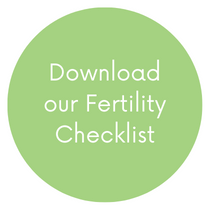Infertility and Sub Fertility
What is infertility?
Infertility is defined as an inability to conceive a pregnancy after one year of sexual intercourse without using any form of contraception, or the inability to carry a pregnancy full term. Conceiving takes time and infertility affects one in five New Zealand couples. The causes of infertility can relate to either the male or female partner, or both partners. Sometimes no cause can be found, and this is called Unexplained Infertility.
What are some of the causes of Infertility?
- Male factors 33%
- Anovulation 20%
- Tubal factor 15% (12% is due to damage caused by STIs)
- Endometriosis 10%
- Sexual Dysfunction 5%
- Unexplained - approximately 15%
1 in 3 couples have more than one cause.

How to get your fertility checked
Did you know that it can take 6 -12 months for the average couple in Aotearoa to conceive? After 1 year of trying (or not preventing), your GP is able to run some tests for a referral to a specialist. However, we do recommend that you start thinking about getting some support much sooner.
3 months before trying:
- Start taking your prenatal supplements, the Ministry of Health recommends all females take folic acid and iodine for at least 3 months before getting pregnant, and for the first 12 weeks of pregnancy.
- Visit your GP and let them know, they will run some prenatal tests to ensure that you are in good health, they can also prescribe folic acid and iodine.
- Support the health of you and your future baby by eating healthy, avoiding smoking and alcohol, and moving the body regularly.
- Consider learning about your fertility with a NFNZ Fertility Educator.
After trying for 6 months:
- If you are over the age of 35, go straight to your GP for some tests and a referral.
- Make an appointment with an NFNZ Fertility Educator who specialises in infertility.
After trying for 1 year:
- If you are under 35, visit your GP for further tests and a referral.
Infertility Investigations
The first line of funded investigations are ordered by your GP, these include:
- A sperm test for the male partner to check count, motility, and morphology, a second test will be ordered if the results are abnormal.
- For the female, blood tests on Day 3, and Day 21 of the menstrual cycle to check hormones, and the normal antenatal workup (rubella immunity, hiv status)
- Cervical smear and high vaginal swabs
Once these results are returned, your GP will be able to organise a referral to a fertility clinic, where you will be put in the queue for an initial appointment (this can take some time). Even if you are not wanting to go down the IVF treatment route, this referral will enable you to recieve a number of further investigations that can help you to understand what may be impacting on your ability to conceive.
At any time during your fertility journey, you can go directly to one of the clinics for private treatment.
Further Investigations
These are the most common tests performed by the Fertility Clinics:
Further Blood Tests to check the thyroid, and other hormones.
Pelvic Ultrasound to check the anatomy of the uterus, kidneys, and ovaries.
Tubal patency testing to check to see if your fallopian tubes are not blocked:
- Hysterosalpingogram (HSG). An x-ray of the inside of the uterus and fallopian tubes using a special contrast fluid (dye). It is carried out after a woman’s period and before ovulation.
- Saline Ultrasound. Performed for the same reasons as an HSG, however instead of an xray, an internal ultrasound is performed whilst the dye or saline solution travels via catheter into the cervix.
Laparoscopy if endometriosis is being investigated, this is a keyhole surgical procedure carried out in a hospital under a general anaesthetic. If endometriosis is found, it is usually removed during the procedure.
Hysteroscopy is an examination of the inside of the uterus and is usually done at the time of laparoscopy.
How can an NFNZ Fertility Educator help you?
NFNZ can support you while you are trying to conceive, by teaching you to recognize the most fertile time of your cycle by recording cervical mucus, vaginal sensation and cervical palpation. The basal body temperature is used to confirm that ovulation is happening, and to work out the length of the luteal phase.
- Confirm that you are ovulating
- Check that you have good quality cervical mucus for the best chance of sperm survival
- Ensure your luteal phase (the second half of your cycle) is at an appropriate length for conception
- Know when to have baby making sex - this is particularly important if you dont notice much fertile type mucus, or if you have irregular cycles
Charting your fertile signs can also reveal other information that can be used as a diagnostic tool, to help you to determine your next steps.






